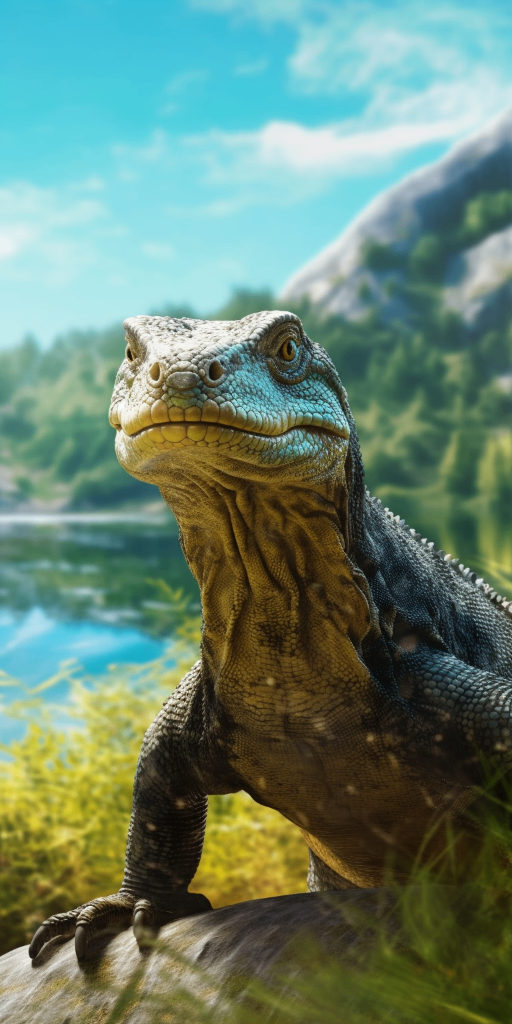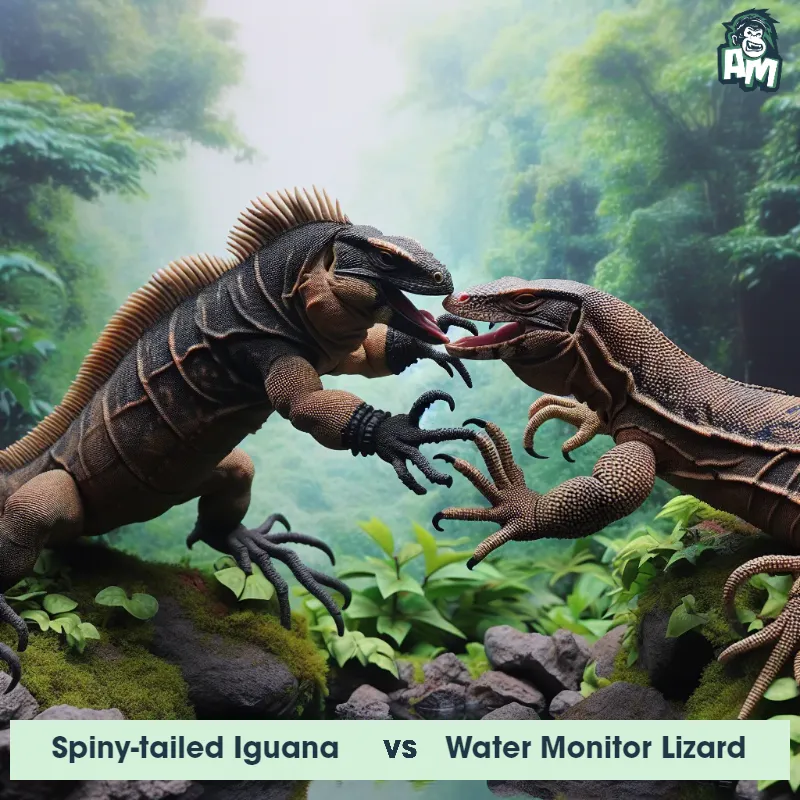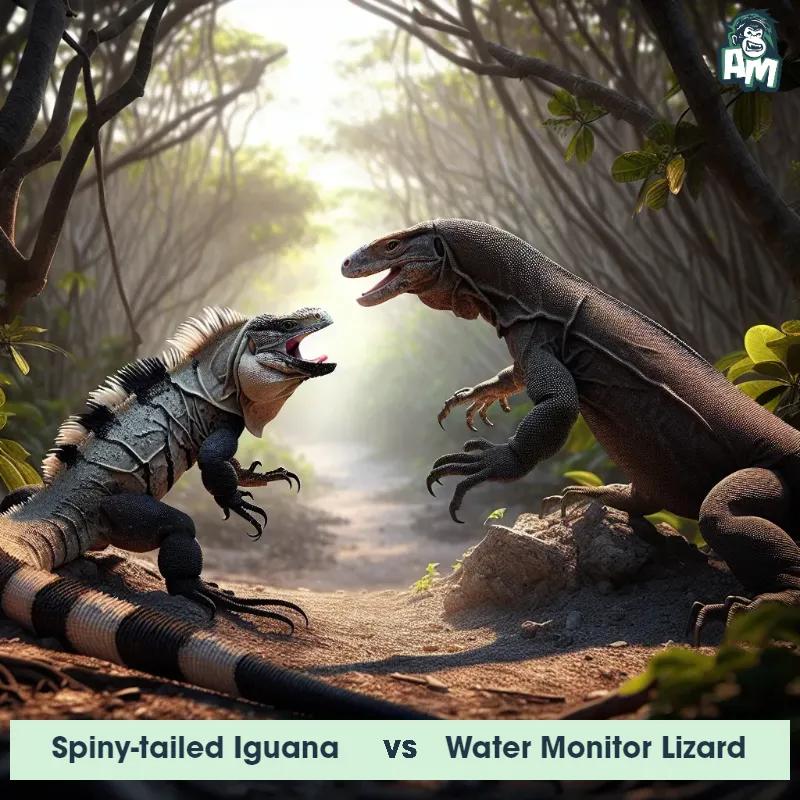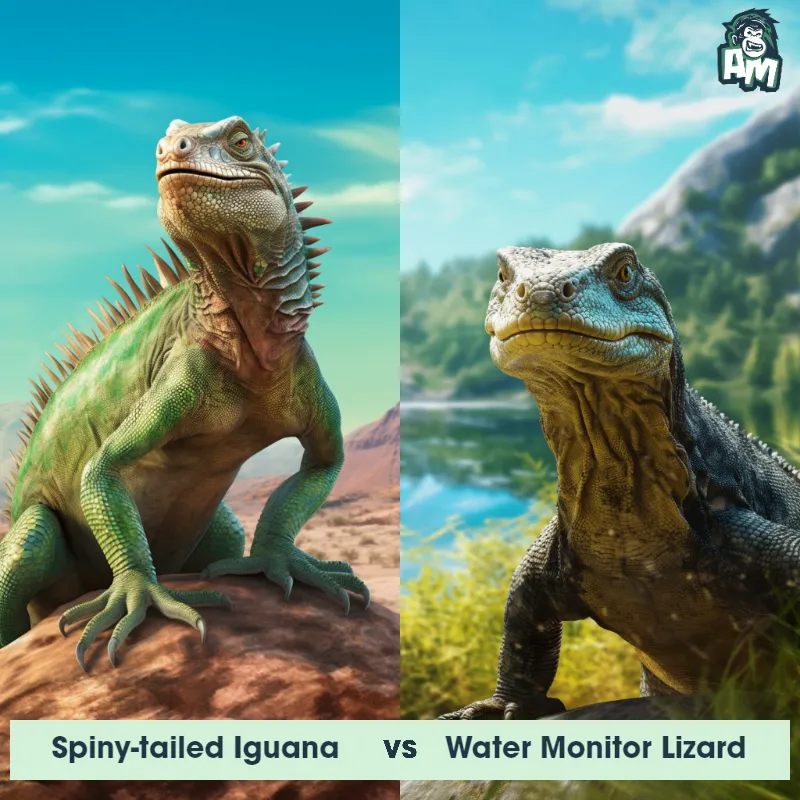The Water Monitor Lizard
The Water Monitor Lizard, also known as Varanus salvator, is a large reptile found in Southeast Asia. It is the second-largest lizard species in the world, measuring up to 7 feet in length and weighing over 50 pounds. It has a long and muscular body, a long tail, and powerful limbs with sharp claws. The Water Monitor Lizard has a rough and scaly skin, usually in shades of brown, gray, or black, with distinct yellow markings. It is an excellent swimmer and can hold its breath underwater for extended periods.

| Water Monitor Lizard | |
|---|---|
| Size | Up to 10 feet long (3 meters) |
| Weight | Up to 150 pounds (70 kilograms) |
| Speed | Speed: 11 mph (17.7 km/hr) |
| Key Strength | Powerful legs |
| Biggest Weakness | None specified |
| Scientific Name | Varanus salvator |
| Family | Varanidae |
| Habitat | Near bodies of water |
| Geography | Southeast Asia, including Indonesia, Thailand, and Malaysia |
| Diet | Carnivorous |
| Lifespan | 11 years - 25 years |

The Water Monitor Lizard
The Water Monitor Lizard, also known as Varanus salvator, is a large reptile found in Southeast Asia. It is the second-largest lizard species in the world, measuring up to 7 feet in length and weighing over 50 pounds. It has a long and muscular body, a long tail, and powerful limbs with sharp claws. The Water Monitor Lizard has a rough and scaly skin, usually in shades of brown, gray, or black, with distinct yellow markings. It is an excellent swimmer and can hold its breath underwater for extended periods.
Fun Fact: The Water Monitor Lizard is an opportunistic predator and will eat a wide range of prey, including fish, birds, mammals, and even carrion, making it a versatile hunter.
| Water Monitor Lizard | |
|---|---|
| Size | Up to 10 feet long (3 meters) |
| Weight | Up to 150 pounds (70 kilograms) |
| Speed | Speed: 11 mph (17.7 km/hr) |
| Key Strength | Powerful legs |
| Biggest Weakness | None specified |
| Scientific Name | Varanus salvator |
| Family | Varanidae |
| Habitat | Near bodies of water |
| Geography | Southeast Asia, including Indonesia, Thailand, and Malaysia |
| Diet | Carnivorous |
| Lifespan | 11 years - 25 years |
Match Highlights
Water Monitor Lizard Matchups
We use AI to simulate matchups between the Water Monitor Lizard and other animals. Our simulation considers size, strength, and natural predatory behaviors to determine the most likely outcome.
Water Monitor Lizard: Diet, Predators, Aggression, and Defensive Behaviors
What do Water Monitor Lizards eat?
Water Monitor Lizards are carnivorous and have a varied diet that includes fish, mollusks, birds, insects, snakes, small mammals, and carrion. They are also known to eat eggs and nestlings of birds and reptiles.
Do Water Monitor Lizards have any predators?
As adults, Water Monitor Lizards are apex predators and face few predators in their habitat. However, hatchlings and juveniles may fall prey to birds of prey, large snakes, crocodiles, and mammals such as feral dogs and cats.
Are Water Monitor Lizards aggressive?
Water Monitor Lizards are generally not aggressive towards humans unless provoked or cornered. However, they can become defensive and use their sharp claws, powerful tails, and strong jaws as a means of defense if they feel threatened.
Do Water Monitor Lizards fight?
While Water Monitor Lizards may engage in combat with each other, especially during the mating season or when competing for territory or resources, fighting is not a common behavior unless provoked.
How do Water Monitor Lizards defend themselves?
Water Monitor Lizards have several ways to defend themselves when faced with a threat. They can swim or run away quickly, use their strong tails to strike, bite with their sharp teeth, and use their sharp claws to scratch and defend themselves.
What is the biggest weakness of Water Monitor Lizards in a fight?
The biggest weakness of Water Monitor Lizards in a fight would be their relatively slower speed compared to some of their predators or competitors. While they can defend themselves effectively, their agility and speed may be a disadvantage in certain situations.
Fun Fact: Water Monitor Lizards have a specialized gland they can flex to excrete excess salt, enabling them to live in both freshwater and saltwater habitats.
Fun Fact: Water Monitor Lizards are highly intelligent and have been observed using tools, such as using branches to dislodge bird eggs from nests for consumption.






















